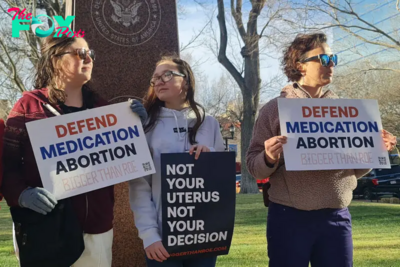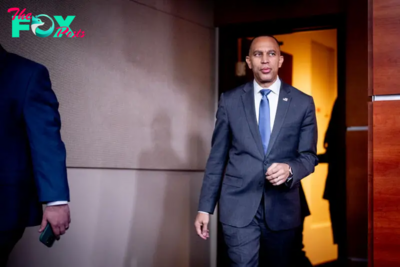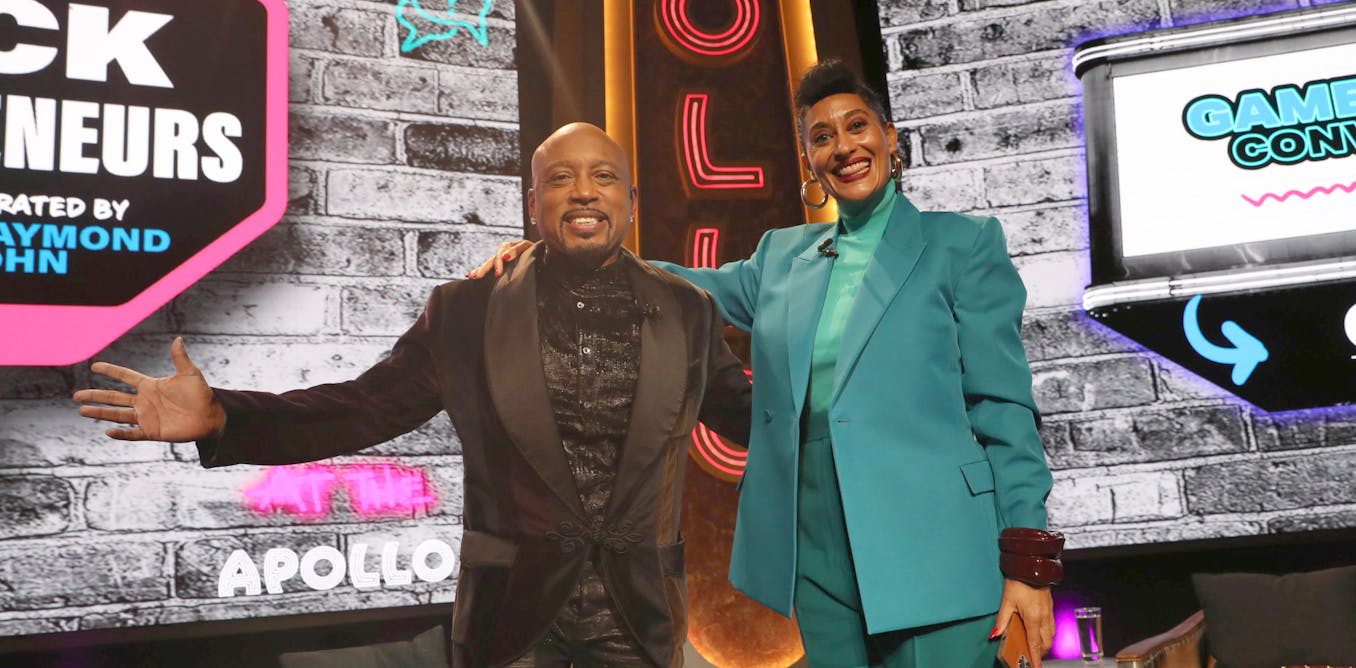Politics
Americans break election ties in crazy ways − and jeopardize democracy in the process
Commentators and observers are concerned about the possibility of a tie in the November 2024 presidential election. One possibility is that both major-party candidates end up with 269 electoral votes – one short of the 270 required to claim victory. Another scenario is that Robert F. Kennedy Jr., who appears to be attracting significant interest from the voters, collects a few electoral votes, preventing Biden or Trump from reaching the magic 270.
But then what? In recent decades, election ties have happened all over the country and have been resolved through bizarre, often comical procedures. The common feature of these methods is that the people’s wishes play no part in them. The voters are entirely removed from what is supposed to be a democratic process.
Strange tiebreakers
For instance, a 2006 local school board election in Alaska was decided by a coin toss, reelecting a woman who had actually died on Election Day.
In June 2009, candidates Thomas McGuire and Adam Trenk tied in the race for a City Council seat in Cave Creek, Arizona. They each got 660 votes. The town judge pulled a deck of cards from a cowboy hat, shuffled it and asked McGuire and Trenk to draw. McGuire drew the six of hearts. Trenk drew the king of hearts and got the seat on the council.
A 2014 city council election in Florida was resolved by a series of steps involving a coin flip and a bag of numbered pingpong balls.
And in January 2018, an official of the Virginia State Board of Elections, adhering to rules set forth in 1705, dipped his hand into a ceramic bowl made by a local artist and drew out one of the two containers in it. The paper inside that container said “David Yancey,” indicating that Yancey, a Republican, had won a seat in the Virginia House of Delegates. This was the final resolution of a tied election in which Yancey and Democratic opponent Shelley Simonds each received 11,607 votes.
Other election ties have been resolved by drawings out of a top hat and a tricorn hat.
A range of rules
The rules for tiebreaking differ from place to place. New Mexico law mandates that a tie should be resolved by a game of chance, such as poker, while Nevada caucus ties call for drawing cards from a deck that has been shuffled at least seven times, with the highest card winning.
In research for my 2024 book “Making Democracy Count: How Mathematics Improves Voting, Electoral Maps, and Representation,” I found that more than half the states have some such lot-drawing or gaming procedure for breaking ties. Some require a runoff election to be held between the tying candidates, while some have the governor or the state board of elections decide the winner. In all cases, the course of action is either random, left to personal or political whims, or starts the election process over from the beginning.

More than half the votes?
This theater of the absurd doesn’t play out only on local stages. One of the most bewildering sets of tiebreaker rules applies to the nation’s biggest election, the one for president of the United States.
As initially set out in Article 2 of the U.S. Constitution, the winner of a presidential election must win more than half of the Electoral College votes. But if nobody gets a majority, which at present is 270, the decision goes to the House of Representatives.
The nonsense that happens next is manifold. First, according to the 12th Amendment, the House can choose from the top three finishers in the electoral vote count. So the winner does not have to be the winner of the popular vote, or even either of the two people who tied in the initial electoral count.
The 435 representatives in the House don’t each get to vote, either. Rather, each state’s delegation as a whole gets one vote. So there are 50 voters, all equal. At this stage, California and Wyoming have the same power, as do each of the other 48 states. Never mind that California has about 66 times more people than Wyoming and 52 times the number of representatives.
If a state delegation – all its representatives combined – can’t agree or is split down the middle, it loses its vote. The winner must get votes from a majority of states. Any gridlock in the process would have to be resolved by wheeling and dealing among the House members.
That’s the process for choosing a president. If nobody gets a majority in the Electoral College, the Senate would elect the vice president, though the rules are slightly different: Each senator gets to vote individually, and they can choose from only the top two recipients of electoral votes for the vice presidency. A simple majority of senators is necessary to declare a winner, according to the 12th Amendment. It’s not clear what would happen if the Senate vote resulted in a tie, though resolving it would also likely involve political scheming.
These parallel processes mean that the House could elect a president from one party while the Senate elects the vice president from the other. And if the House can’t agree on a president, but the Senate selects a vice president, then the vice president-elect becomes president until the House decides.
Ending in a tie
Ties have happened before in presidential elections. The first occurred in 1800. After Thomas Jefferson and Aaron Burr each received 73 Electoral College votes, the 16 states of the Union voted 36 times to elect one of them but ended in a tie themselves. Jefferson was finally elected president on the 37th vote. Burr became vice president.
But Jefferson and Burr had been running mates, not opponents, so the result highlighted a complication in the original Constitution. In 1804, the 12th Amendment was passed to clarify the process of electing the president and vice president, in particular to require separate electoral votes be cast for the two.
In 1824, though, the presidential election went to the House again. Andrew Jackson, who ran as a political outsider, won the popular vote and more electoral votes than the other three candidates, though not a majority. After political maneuvering, the House chose the person who had come in second, John Quincy Adams – an insider Jackson had opposed – as the president.

A key weakness in US elections
All these tiebreaking methods are, in essence, arbitrary. Chance – not the people – decides who gets to act as the representative of the people. But the tiebreakers are necessary only because of a key weakness of the way most Americans vote for most offices: Voters cast a ballot for the one person they prefer, and winners are chosen by who gets the most votes.
The shortcoming is that voters identify only their top choice, so the process provides no information that could be used to break ties in some informed way. What’s left is dependence on centuries-old traditions, rules and laws that are at best inappropriate for our time and are frequently just plain ridiculous.
For presidential elections, abolishing the Electoral College or otherwise amending the methods by which states assign electoral votes wouldn’t help – because ties in the popular vote could still happen at either the state or national levels. They might be less likely with so many people voting, but they would still be mathematically possible, so any new system would need to incorporate a method for handling ties.
To avoid leaving the result to chance, our election systems would need to include a way for voters to provide more information about their preferences than just their top choice. Other voting methods exist that do so. Ranked choice voting, for instance, asks voters to identify not only their top choice but also their second, third and subsequent choices, depending on how many candidates there are. In case of a tie, the rankings beyond the first choice would allow election officials to determine a winner based on the wishes of the electorate – rather than letting democracy be determined by a deck of cards.
-

 Politics8h ago
Politics8h agoWhy Trump Actually Needs Mexico
-

 Politics8h ago
Politics8h agoMan Convicted of Killing Laken Riley Sentenced to Life in Prison Without Parole
-

 Politics14h ago
Politics14h agoHow the Biden Administration Protected Abortion Pill Access—and What Trump Could Do Next
-

 Politics14h ago
Politics14h agoWhy Trump’s Tariffs Could Raise Grocery Prices
-

 Politics1d ago
Politics1d agoThe First Trans Member of Congress Expected Pushback Like Mace’s Bathroom Rule
-

 Politics1d ago
Politics1d agoNew York Prosecutors Oppose Dismissing Trump’s Hush Money Conviction
-

 Politics1d ago
Politics1d agoWhite House Christmas Tree Is a Symbol of Resilience for Hurricane-Hit North Carolina Farms
-

 Politics1d ago
Politics1d agoHakeem Jeffries Wins Reelection as House Democratic Leader Despite Party’s Losses





















